One of my favorite lessons to teach in my short story unit is the Hero’s Journey. I enjoy teaching the hero’s journey because I love seeing my students’ aha! moments – the moment when they get it, and they start making the connections between the content I am teaching and their favorite books and movies. Their faces light up, and faint chatter about Harry Potter, various Disney movies, and other stories slowly fills the room. 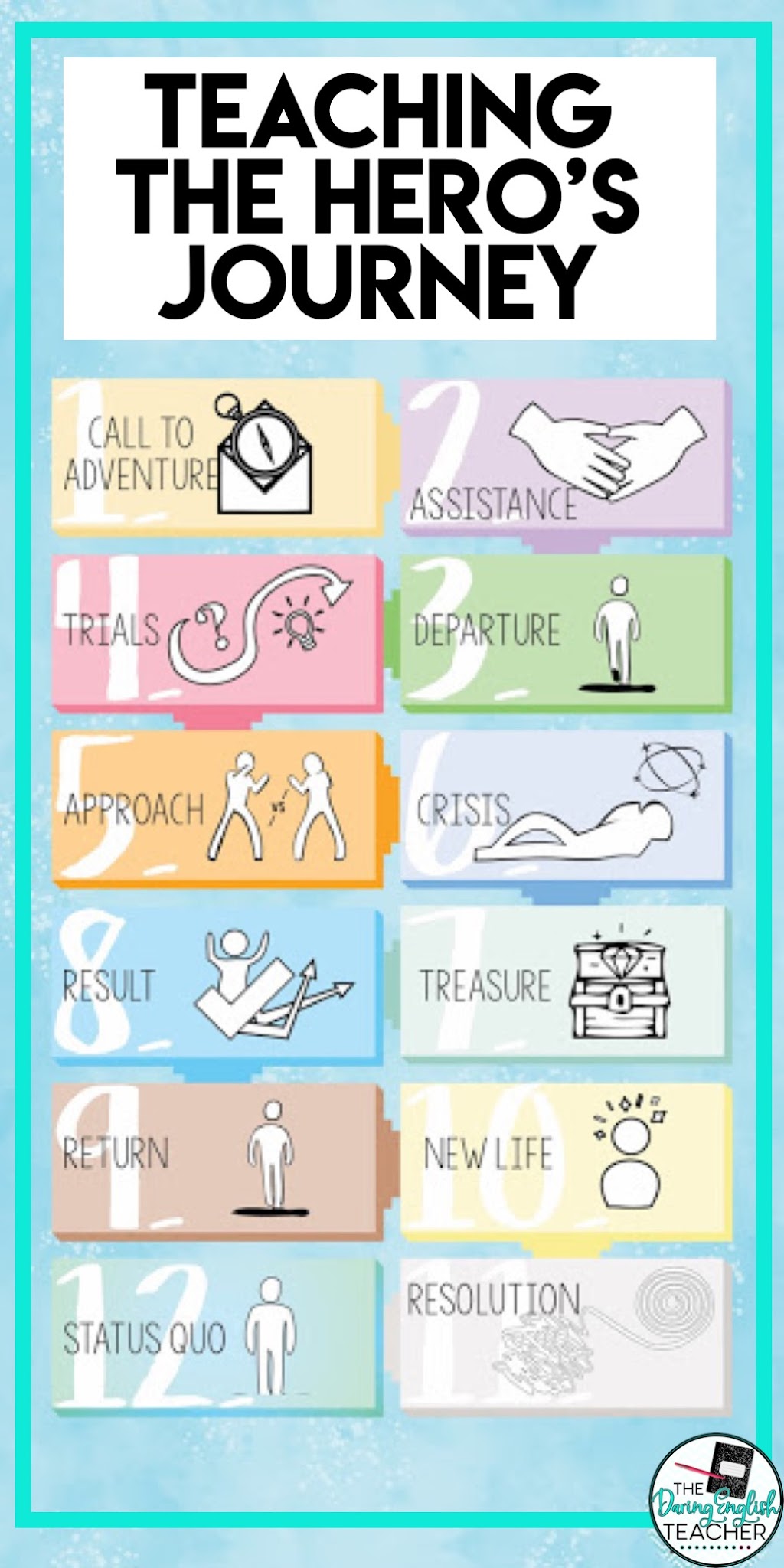
To introduce the Hero’s Journey, I first teach my students about the Hero’s Journey. Then, I show the Ted Ed video “What Makes a Hero?” by Matthew Winkler. This video is spectacular for a couple reasons. First, I love how it presents the Hero’s Journey in relation to a clock and a cycle. This visual sticks with the students. I also like how this video relates to the notion of the Hero’s Journey to students in their everyday lives.
Once we go over the video, we then read a short story and track the protagonist’s journey as a hero. Together, we identify each element of the Hero’s Journey cycle as outlined in the video and then discuss the qualities that make the character a hero. This helps me gauge whether or not my students are ready for the Hero’s Journey project. I have a graphic organizer in my Sticky Note Literary Analysis Unit.
The Hero’s Journey poster project is one of my favorite projects of the year. Students form groups of 2-3 and select a movie or book that they feel is a quintessential representation of the Hero’s Journey. Together, they discuss the movie and create a poster that represents all of the elements of the Hero’s Journey. I provide my students with a tabloid size piece of paper (affiliate link) for the project so they have more space to create.
To conclude the assignment, I have students present their findings to the class so that they can practice their presentation and public speaking skills.
I usually give my students 2-3 days of class time to work in their groups.
Teaching the Hero’s Journey: the 12 Stages 
Joseph Campbell’s Hero’s Journey is a narrative structure that describes the typical stages that a hero undergoes in a story. Following along with the arch, these are the 12 stages of the hero’s journey.
- The Ordinary World: The hero begins in a normal, mundane world, often unaware of the adventure that awaits.
- The Call to Adventure: The hero receives a call to leave their ordinary world and embark on a journey.
- Refusal of the Call: The hero initially hesitates or refuses the call, often due to fear or a sense of inadequacy.
- Meeting the Mentor: The hero encounters a mentor or guide who provides guidance, advice, or tools for the journey.
- Crossing the First Threshold: The hero commits to the adventure and crosses into the unknown, leaving their ordinary world behind.
- Tests, Allies, and Enemies: The hero faces a series of challenges, makes new friends, and encounters adversaries on the journey.
- Approach to the Inmost Cave: The hero approaches a critical point in the journey, often facing their greatest fear or confronting a powerful enemy.
- Ordeal: The hero undergoes a significant trial or ordeal that tests their abilities and resolve.
- Reward (Seizing the Sword): After overcoming the ordeal, the hero earns a reward or gains a valuable insight that propels them forward.
- The Road Back: The hero begins the journey back to their ordinary world, often pursued by enemies or facing additional challenges.
- Resurrection: The hero faces a final, often life-threatening challenge that transforms them and solidifies their hero status.
- Return with the Elixir: The hero returns to their ordinary world with newfound knowledge, a treasure, or a boon that benefits themselves and others.
This is the first of two blog posts that outlines how I teach the Hero’s Journey. The next post will be about short stories and poems that you can use in your classroom when teaching the Hero’s Journey.
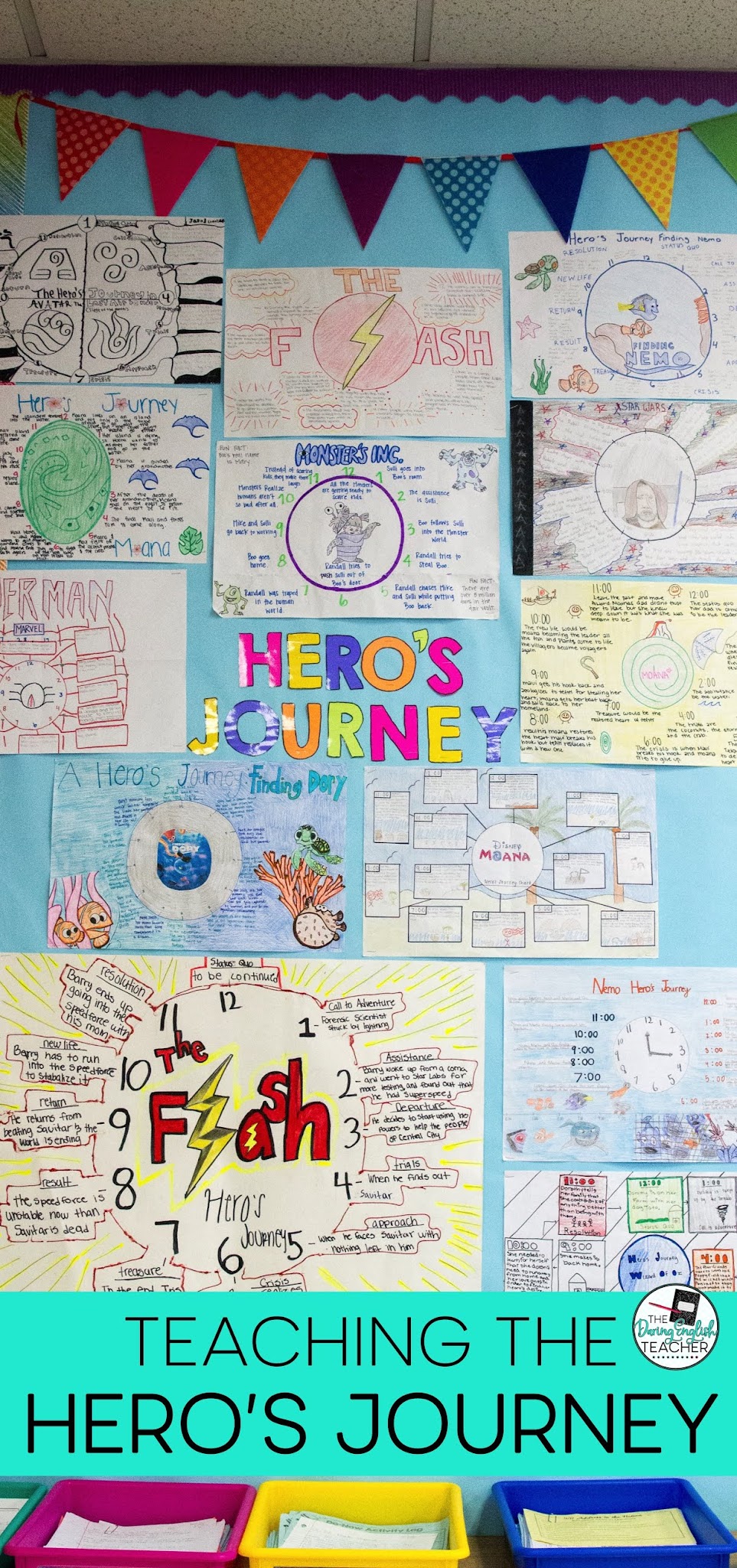
\


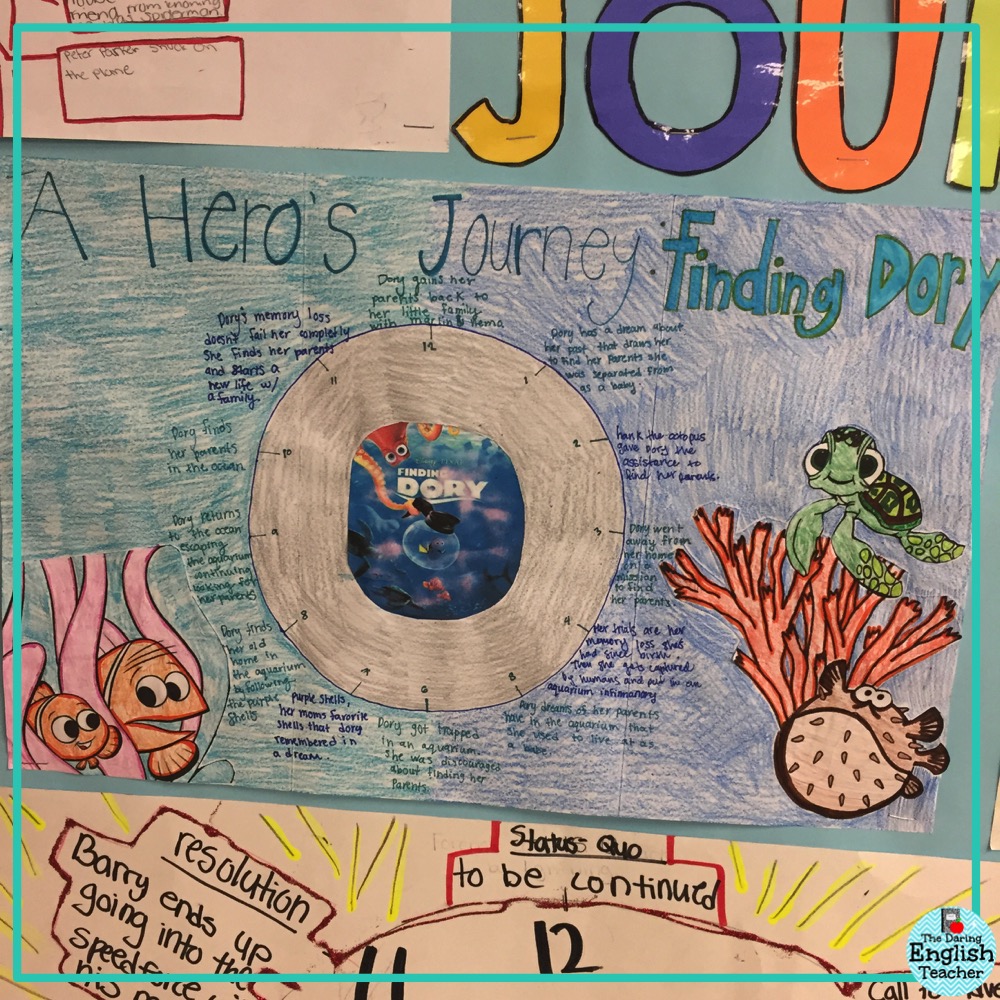
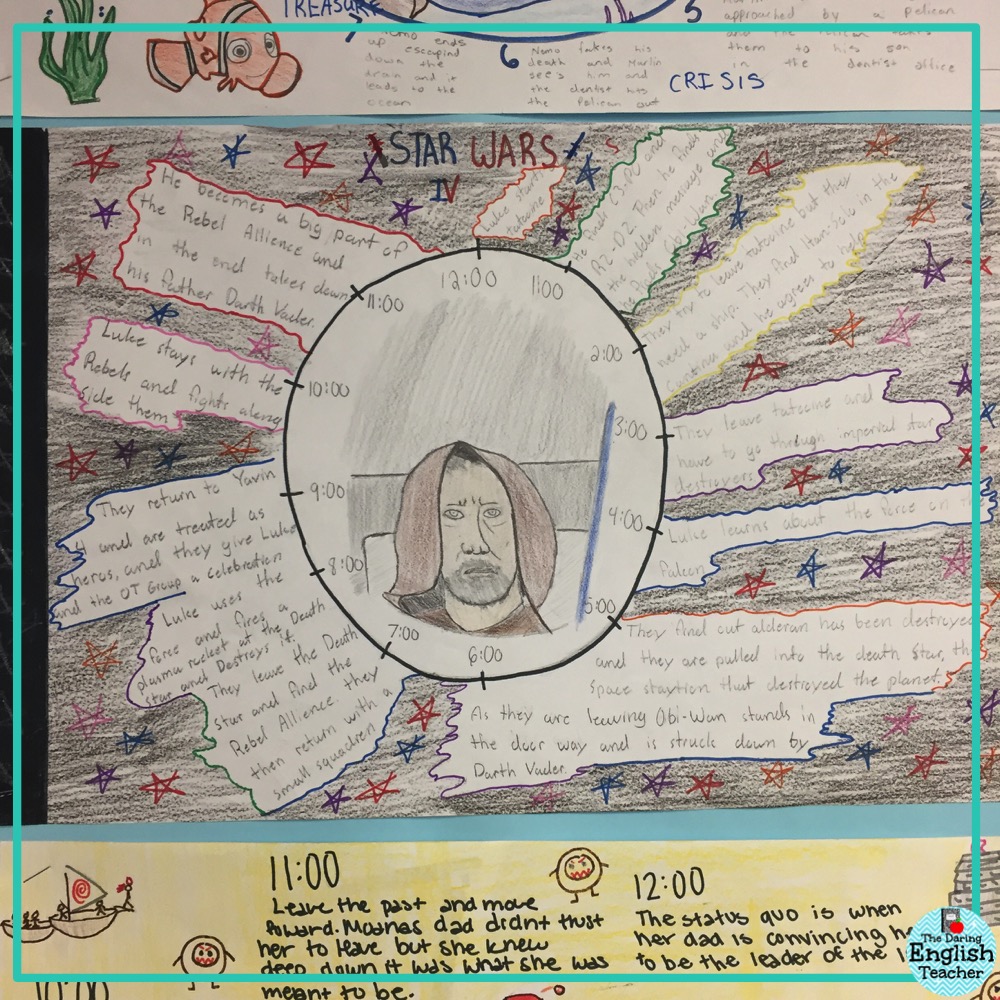
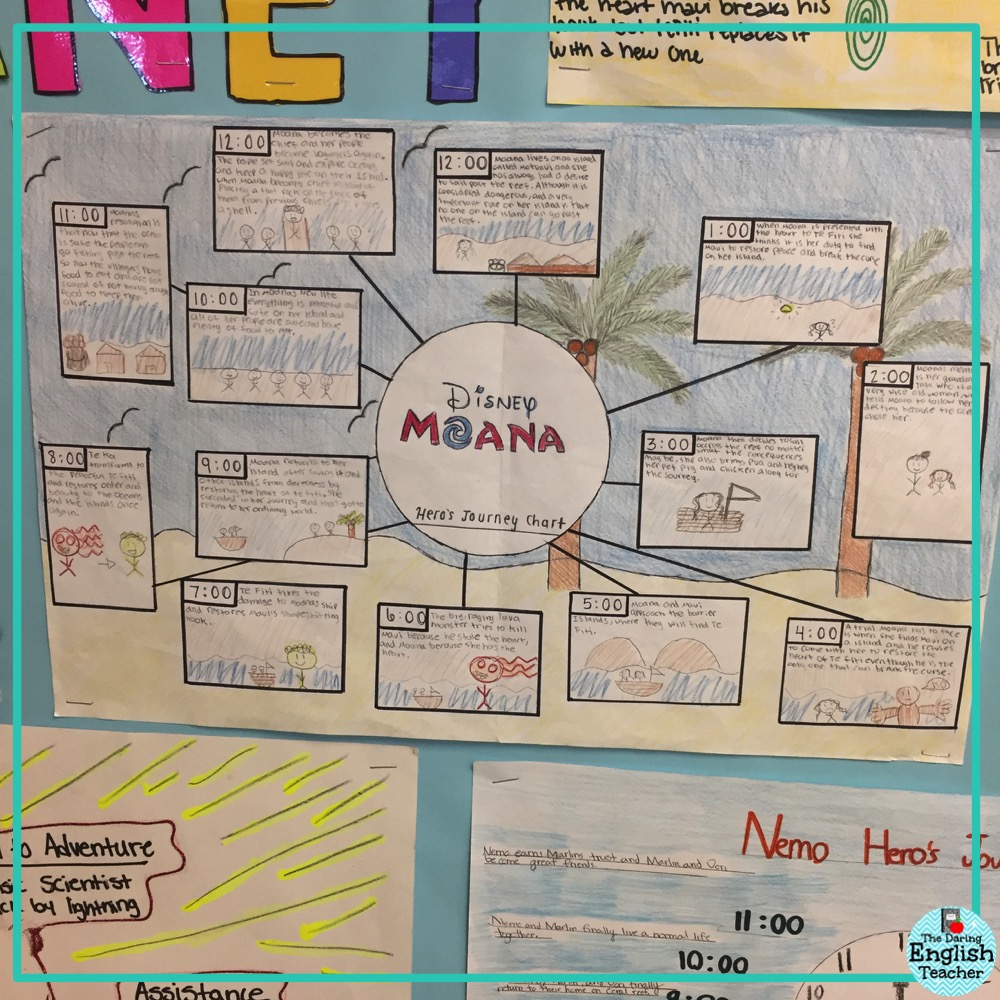

12 Comments
I love the idea of this project. Students are making connections between their favorite movies or tv shows and the concept they are learning. I want to revisit this blog post once I am a teacher and see if I can create something similar based on my curriculum.
Hi Angel,
Thank you for reading.
Hi! This is great!
What were the texts (poems and short stories) that you would use to teach the hero's journey?
Hi Yinka,
Thank you for reading. I will be publishing a blog post this weekend about the literature I use when teaching hero's journey.
I did a long unit with my high school students where we watched the cartoon mini Series Over the Garden Wall then plotted the moments of the Hero’s Journey together.
This comment has been removed by the author.
I love this project. I would like to try it with my grade 11 ESL students.
I forget to ask: Which short story do you use with your graphic organizer?
One of my favorite stories to use is Contents of a Dead Man's Pockets.
I so love this project. Will the project guidelines and rubric be available for purchase on your TPT store? Thanks so much for sharing this great idea!
I don't have a rubric for this assignment right now. It is one that I give mostly full credit on as long as students mostly get the concept.
I have been tinkering with adjusting my units for next year so that there is a cohesive, year-long focus. I never thought about teaching The Hero's Journey first thing, but I like the sound of this! Coincidentally, my first short story is "Thank You, M'am" which you mentioned in the second post.
Thanks yet again for making me a better teacher!